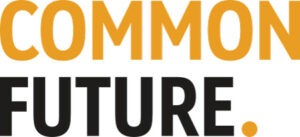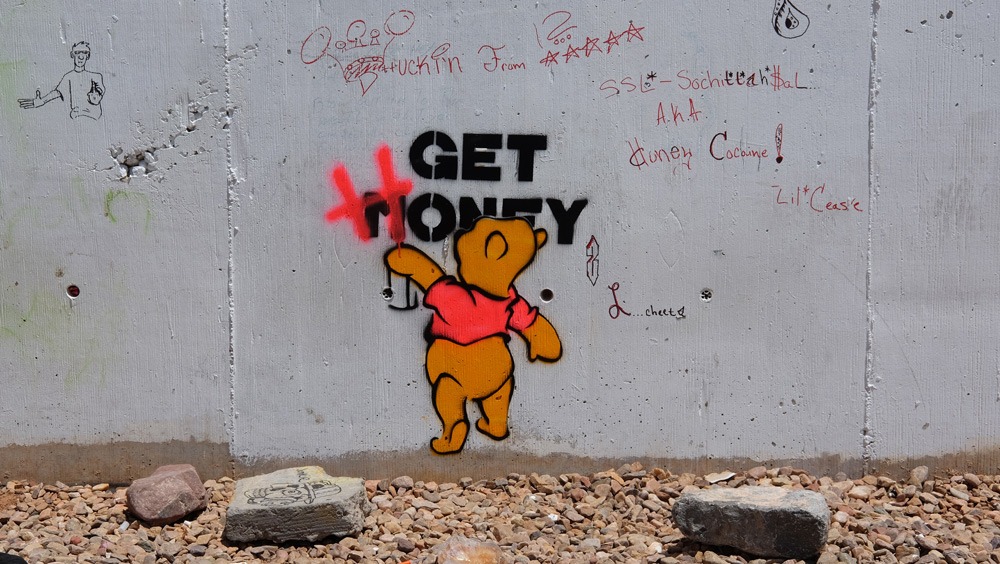

With this article, we launch our series—Narratives to Build Collective Economic Power—which NPQ is publishing in partnership with the national racial and economic justice nonprofit, Common Future. In this series, the authors write about their economic justice work and how, in their work, they challenge conventional narratives and offer new ways of thinking about who can be owners in the economy and what community economic development means.
We know that our economy is inequitable and unjust. We see this in everything from unemployment numbers to the number of business closures to the nation’s enormous racial wealth gap. What makes this inequity difficult to tackle is not just its pervasiveness; it’s also the stories underpinning our economy—the beliefs around what is right or just, and who is deserving or at fault.
For those of us working to build a more equitable economy, our policy and philanthropic efforts—even our day-to-day practices—have to champion new models of and stories about what our economy can be, models and stories that challenge dominant ideas about what is just. Specifically, we must tell stories that shift our view of individuals as sole actors and challenge the “winners and losers” mentality.
Earlier this year, writing in Shelterforce, Anne Price, President of the Insight Center for Community Economic Development, shared the story of the life of one of her ancestors, James Albert Parsons, Jr. Born in 1900 in Dayton, OH, Parsons was able to build a life unimaginable for Black people at the time. With a gift for math and desire to pursue engineering, he graduated from college, became the director of Duriron Research Laboratory—where he supervised the nation’s only all-Black lab—secured eight patents, and upon retirement, became a college professor and dean.
Yet, as Price notes, none of these strides and successes led to wealth accumulation for James or his family. “He was exceptional, but no exception,” Price observes—blocked from generating wealth to pass down to his children and grandchildren. His individual success was no match for the structural barriers around him: redlining, pay gaps, and chronically underfunded educational institutions.
Many of us can share similar stories of people in our lives and communities who “beat the odds,” as the saying goes. These people are celebrated and presented as examples of what’s possible. Their stories’ pervasiveness illuminates how we think about economic inequity and wealth. In short: wealth is a matter of individual grit and accomplishment. If you don’t get there, you simply didn’t try hard enough.
This belief affects how we define problems and pursue solutions. For example, if we believe the wealth gap is the result of poor choices, we will focus on individual interventions like financial workshops and not put pressure on banks to overhaul their lending practices. This is not to say individual interventions aren’t necessary or helpful. They certainly are. However, we know that large-scale, long-term social change requires structural change. In our focus on the individual, structural barriers become hidden; they are “common sense” or “just the way things are,” allowing long standing, inequitable practices to flourish and to continue extracting from the very communities who need to build wealth the most.
Thus, structural change requires, not just interrogating existing stories and the behaviors they support, but also offering new, more compelling stories that reflect our shared vision and values while showcasing efforts to create an economy where people like James and his community enjoy success and wealth. The stories with which people make sense of the world must lead them to build a future with all communities in mind.
Sign up for our free newsletters
Subscribe to NPQ's newsletters to have our top stories delivered directly to your inbox.
By signing up, you agree to our privacy policy and terms of use, and to receive messages from NPQ and our partners.
Can New Narratives Build Collective Economic Power?
We have titled this series, “Narratives to Build Collective Economic Power,” but can narratives actually do that? At Common Future, we believe they can—and must. In this series, we feature five community wealth builders from our network who share their stories and the beliefs underpinning their models—stories that emphasize collective power, community trust, and reparative investment. In addition to learning about their work, readers will learn about the challenges and opportunities in identifying and uplifting new stories that create new narratives about what’s possible.
The stories told share common themes yet vary tremendously. Two authors are from the US South—one recounts the story of organizing to protect Black-owned land in South Carolina; the other looks at what is required to develop Black-owned businesses in Mississippi. We also include a story about how to preserve Latinx businesses in Los Angeles. And we have two stories from Native America—one that focuses on Indigenous economics and another that poses comunalidad (communalism) as an alternative economic and narrative frame of reference.
How does narrative change happen? There are many answers to this question. One answer is that narrative change often occurs when there is a disconnect between what is said and what is happening—when people ask questions and are hungry for answers. We’ve seen such moments arise in the past few years. The COVID-19 pandemic is one prominent example, as it laid bare so many failings of US society. Part of the reason, too, why up to 26 million people across the US mobilized after the murder of George Floyd is because the video images of Floyd’s killing made it impossible, at least for a short time, for millions of white Americans to deny the pervasiveness of structural racism.
These are dramatic moments when narrative shift occurs. But often narrative change occurs more slowly, hidden from view. It is this subtler change that this series highlights. For example, Tómas Durán of Concerned Capital, a Southern Californian firm that helps employees become owners, writes about what he calls “workplace entrepreneurs.” Long-term employees who have been told all their lives that they cannot be business owners, workplace entrepreneurs are people who in fact “have the potential to run and own their own businesses, but only if they are mentored and supported and that potential is tapped.” It is important to tell a story that highlights their capacity.
In Mississippi, Tim Lampkin of Higher Purpose Co. notes that the “profits of Black culture largely line the pockets of people who are white.” One of the central strategies of the nonprofit he leads is to share stories of success—again, telling people who believe they cannot build wealth that they can—and, of course, providing them with the technical assistance and support to do so.
It might not seem that having community conversations regarding estate planning would be an important narrative change strategy. But as Dr. Jennie Stephens of the Center for Heirs Property Preservation in South Carolina details, it is essential. “Poor folks just do not sit around the kitchen table and talk about estate planning,” Stephens explains. “It is unfortunate, but nonetheless true. Inheritance and land use can be a difficult conversation to have. Often, these people have been taken advantage of.” Part of building community wealth, in short, involves creating spaces where conversations regarding how to preserve existing wealth, such as land ownership, can occur.
A lot can be done. Vanessa Roanhorse, who is Navajo and leads a Native consultancy firm, observes that in the long historical scheme of things, “The market is mutable and young, which means it can change. We can change it.” ChristinaMaria Patiño Xochitlzihuatl TouTou Soutil Houle of the arts collective, Las Imaginistas, similarly challenges us to think expansively: “The world is at a moment of changing consciousness,” she writes. “How we approach the problems ahead of us will be determined by our ability to soften attachment to old definitions of ourselves and welcome in new ways of being.”
In short, countless efforts are underway to change actions and beliefs so that we may all have better lives. We can solve the economic challenges we face. And the people closest to these challenges most often have the best solutions.
One thing is clear: the economic narratives that have dominated our society have not served us well. Fortunately, in every crisis—and we are living through plenty of these—there are also opportunities to shift power to low-income and BIPOC communities and create new narratives around what a good economy looks like. It is, after all, in the combination of action and story that our boldest efforts can take hold.










